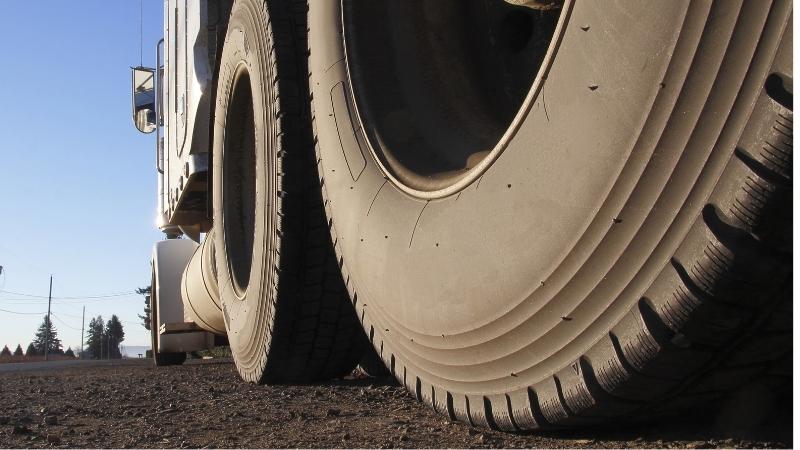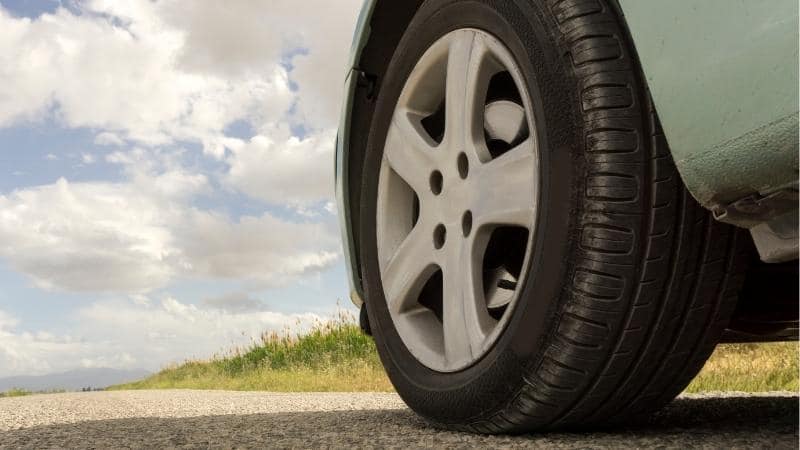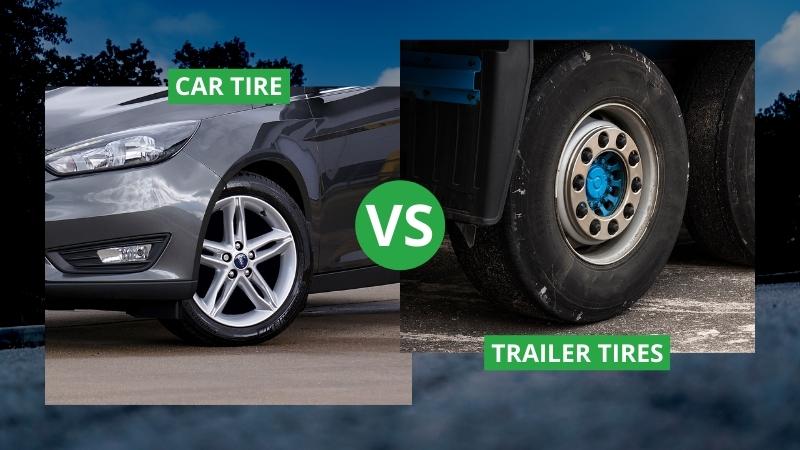Most vehicles are made with a driving purpose. The design, construction, weight, engines, mirrors, and even simple details like tires are all affected by the nature of the vehicle.
When it comes down to tires for cars, manufacturers make tires that fit the purpose for which the car is built.
Most cars usually have smooth tires which make them fast and move seamlessly on good roads. Heavy-duty trucks, especially trailers on the other hand usually have more sturdy designs. This helps them carry the trailer weight and move on rough terrains easily.
Curious about the differences between car tires and trailer tires?
Stay tuned to learn more!
The Difference Between Car and Trailer Tires: They Are Built For Different Purposes
When it comes to choosing tires for your trailer, you may notice that they are the same size as the tires on your car. Using the spare tire from your car on your trailer may even be a tempting option, but don’t.
To react to different stresses, the structures of trailer tires and passenger vehicle tires are different. This might result in catastrophic repercussions if you drive on your trailer tires or use automobile tires on your trailer wheels.
It is via their tires that passenger cars communicate with the road. Through accelerating and braking, the tires distribute the power back and forth.
When the terrain changes, they change shape to ensure that they can continue holding. They have a longer tread life and may be put to greater use than a trailer tire in most circumstances.
The construction of trailer tires is primarily concerned with load-bearing capability and towing capacity. There is less emphasis placed on the tread life since the sidewalls are stronger with this design.
A trailer tire’s structure may be divided into two categories, both of which are intended to withstand the stresses associated with hauling a trailer. It is not necessary to transmit power to the road or to drive the vehicle in question.
Trailer Tires Design

Tires for trailers (ST) are available in two types of ply: bias and radial. Each has its own set of benefits. In general, though, they are used for towing purposes.
The material used to construct the sidewalls of trailer tires is thicker than the material used to construct the sidewalls of passenger tires. Because trailer tires are not required to manage quick bends, their tread is concentrated mostly in the center of the tire to aid in the handling of high loads.
Radial trailer tires have the same fundamental construction as car tires and have a longer tread life than car tires, making them an excellent choice for lengthy hauling.
Bias-ply trailer tires have a shorter tread life than conventional trailer tires, but they are created using a distinct construction style that is meant to withstand larger loads. More information may be found at the finest trailer tires.
Car Tires Design

A radial design is used in the production of your typical passenger vehicle (P) or light truck (LT) tire. Unlike trailer tires, these tires are intended for a distinct set of applications. This rating might be for weight carrying capability, long-distance driving, or a mix of both, depending on the classification.
The fundamental structure, however, is the same regardless of the design. During their building, three important considerations should be kept in mind:
- Acceleration: When traveling at a high rate of speed, an automobile tire must provide traction while also enduring the forces induced by the acceleration. Hence, car tires are built to move faster on most terrains and the narrow ones even perform so well in snow.
- Braking: When braking, the automobile tire must withstand the loads placed on it to bring the vehicle to a complete stop. Manufacturers ensure that these car tires provide just the right support. You can check the tire load index for more information.
- Turning: In the course of making a turn, the tread and general design of the tire flex to give more traction. Car tires can help make swifter turns compared to trailer tires due to this conscious design tweak.
When it comes to constructing an automobile tire, these three characteristics are of the biggest significance. The materials and structure are appropriate for the vehicle’s requirements. They’re even programmed to react to changing weather conditions to meet these requirements.
With appropriate care and maintenance, these tires may have tread life capabilities of up to 80,000 miles or more. It might be tempting to load them up on a trailer and tow them away.
How to Differentiate Between Car and Trailer Tires
The casual observer could confuse them at first look, but trailer tires and passenger tires are substantially different. Once you know what you’re searching for, they’re simple to separate.
- First, most passenger tires will display a code of P for Passenger, or LT for Light Truck in front of the other numerals on the tire. Trailer tires have a code of ST.
- Second, trailer tires have thicker sidewalls and smaller tread width. When side by side with a vehicle tire, it’s simple to tell the difference.
Conclusion
On the surface, trailer tires and conventional car tires may seem to be the same, but they are highly different from one another. When you use them interchangeably, you are asking for trouble, even if the intended usage is brief.
Car tires are responsible for transferring vehicle power to the road and responding to rapid bends while preserving traction and grip. Trailer tires are designed to support big loads and feature reinforced sidewalls to reduce swaying while in operation.
Always refer to the owner’s handbook for the trailer or vehicle in issue if you are unsure about anything. Moreover, we have so many other articles on tire questions you might have on your mind!
Hi, my name is Niklas, the head content creator & CEO of Whirling Wheelz. I am very interested in vehicles of all kinds, mainly cars. I have a car mechanics degree from high school and a big hobby of mine is to follow the WRC (World Rally Championship) both online and through travel.


